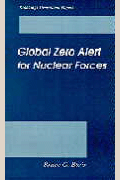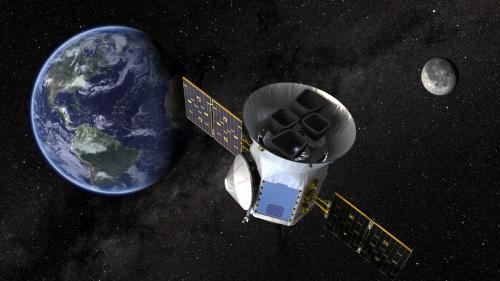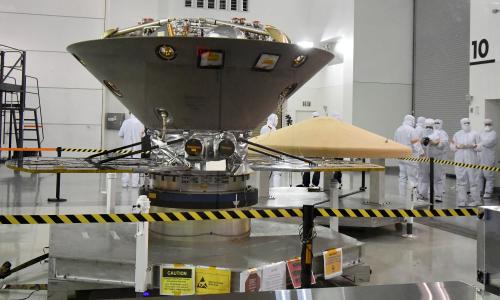The United States can ill afford to waste precious dollars on space-based missile defenses and a new arms race that will make us less, rather than more, secure, argue James Miller and Frank Rose. This piece was originally published by CSIS.
Although the Trump administration has not yet released its Missile Defense Review, as mandated by Congress, it is considering the possible deployment of space-based interceptors. In addition, some administration officials have implied that space-based directed energy systems may receive increased funding on the path to deployment.
The last U.S. foray into deploying space-based interceptors ended over 25 years ago when the Brilliant Pebbles program was cancelled in 1993. Space-based directed energy systems have been off the table even longer; it’s been over 30 years since a highly-regarded 1987 report by the American Physical Society concluded that any meaningful missile defense of the United States using directed energy weapons was—at least—decades away.
Technology has advanced markedly over the past several decades as evidenced by the deployment of hundreds (soon thousands) of low-cost commercial small satellites. There have also been major advances in directed energy systems, solid-state lasers in particular, and all four U.S. military services are now deploying them for tactical roles.
As a result of this technological progress, a serious national discussion on space-based interceptors and directed energy systems is coming soon. Advocates and opponents are likely to cite wildly divergent assessments of technology maturity and likely costs. The reality is that there is much uncertainty: Technology exploration will take years, and while costs almost always end up much higher than initially projected by proponents of new complex systems, the detailed costs unfold over time.
However, we can reach some strong conclusions by carefully assessing the advisability of these systems relative to North Korea on the one hand, and China and Russia on the other.
North Korea
We support the Trump administration’s efforts to attempt to negotiate the end of North Korea’s nuclear weapons, long-range missiles, and supporting infrastructure. While these negotiations should be pursued, we are skeptical that Kim Jong-un will disarm. Therefore, national missile defense remains essential for the United States.
Today, some 44 Ground-Based Interceptors are deployed to defend against the North Korean missile threat to the United States. Within the missile defense portfolio, the first priority must be to ensure that these interceptors are effective; both this administration and the last have made significant investments in improving the interceptor kill vehicle, command and control systems, and supporting sensors.
We agree with those who suggest that a second layer of defensive capability, preferably in the boost phase of missile flight, should be pursued to deal with the North Korea threat. However, this boost-phase layer can be achieved sooner and more cheaply with airborne boost-phase capabilities rather than with space-based capabilities. Moreover, because of their limited range and survivability against a peer competitor, airborne boost-phase deployments would not threaten to undermine strategic stability with Russia or China. To its credit, Congress has mandated a study of airborne boost-phase defense options for North Korea (many of which would also allow an additional hedge vis-à-vis Iran).
China and Russia
The deployment of space-based interceptors or directed energy systems by the United States would almost certainly trigger a response by Russia and China. In particular, each country likely would respond in three ways.
First, China and Russia would likely deploy additional intercontinental-range missiles, armed with countermeasures designed to defeat boost-phase intercept systems, such as short-burn boosters, hypersonic boost-glide systems, and depressed trajectory submarine ballistic missiles. Because fewer missiles might survive U.S. defenses, they would also be incentivized to further increase the number of warheads on each missile, a step that would make land-based missiles in particular both more threatening and more inviting as a target.
Second, China and Russia would likely increase their deployments of alternative delivery systems for nuclear weapons, including air-launched cruise missiles, sea-launched cruise missiles, and “special” delivery systems such as the Russian nuclear-powered multi-megaton torpedo Status 6. At the end of this process, the United States would face substantially larger and more diverse Chinese and Russian strategic nuclear arsenals, but in all likelihood, the current situation of mutual vulnerability (i.e., mutual assured destruction) would remain intact. All sides would have spent far more resources and would need to sustain this spending going forward in a new offense-defense arms race. If the United States continued to desire rough nuclear parity with Russia, it would need to expand its nuclear arsenal, perhaps significantly.
Third, China and Russia would not accept the United States owning the high ground of outer space any more than the United States could accept China or Russia being in this position. It would be a top national priority for both countries to prevent the deployment of such systems, or barring that, to be able to disable or destroy them early in any crisis or conflict. If the United States decided to proceed given this reality, it would need to plan to quickly deploy large numbers of systems and to provide for their protection and replenishment.
U.S. allies would foresee the above implications and be concerned both about a new destabilizing arms race and the diversion of U.S. defense spending away from more pressing needs. As a result, a rapid U.S. push to deploy space-based missile defense interceptors or directed energy systems would reverberate globally, potentially undermining NATO and critical U.S. alliances in the Asia-Pacific. Given that the U.S. missile defense architecture depends on allies to host key elements, allied support is essential for operational as well as geopolitical reasons.
An Alternative Approach
Instead of rushing into a costly and destabilizing deployment of space-based interceptors and/or directed energy systems, the United States should:
- Focus near-term national missile defense spending on improving the current Ground-Based Mid-Course Defense system (including kill vehicles, sensors and command, control and communications [C3]), and on rapidly adding short-range boost-phase airborne interceptors in the near-term, and airborne lasers in the longer-term.
- Move forward with the modernization of the U.S. strategic nuclear delivery vehicles, nuclear C3, and the supporting Department of Energy nuclear weapons infrastructure. This modernization program is needed to support deterrence and bolster strategic stability. The United States should also continue to pursue verifiable arms control with Russia and, over time, with China.
- Declare a moratorium on any deployment of kinetic-kill interceptors or directed energy systems in outer space and call on China and Russia to join. At the same time, proceed with a low-level of research and development as a hedge and as an incentive to Russia and China to join the testing moratorium and to come to the table to begin a broader discussion about outer space security. Such a strategy would have the objective of developing practical norms of responsible behavior that strengthen the stability and sustainability of the outer space environment.
- And because Russian and China are unlikely to abandon their existing counterspace programs in the near future, accelerate ongoing efforts to diversify, defend, and add resilience to the U.S. space architecture.
Conclusion
Due to a range of technological developments, both the strategic nuclear balance and the situation in outer space vis-à-vis China and Russia are headed into challenging times, where strategic stability will be placed under increased pressure. At a time of growing budgetary pressures as well as increased competition with other great powers, the United States can ill afford to waste precious dollars on space-based missile defenses and a new arms race that will make us less, rather than more, secure.










Commentary
How space-based missile defenses could make us less safe, not more
December 14, 2018